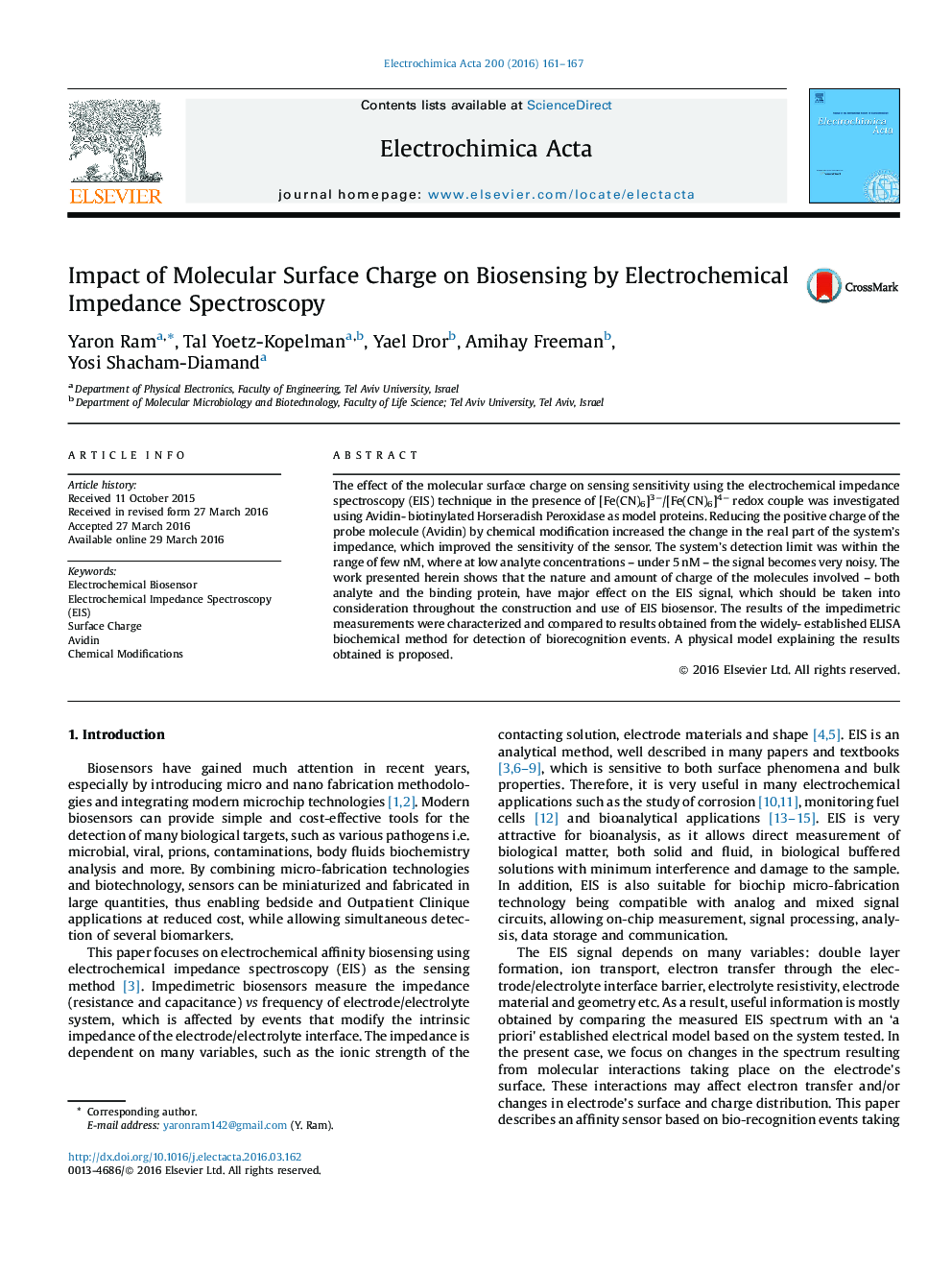| Article ID | Journal | Published Year | Pages | File Type |
|---|---|---|---|---|
| 183171 | Electrochimica Acta | 2016 | 7 Pages |
The effect of the molecular surface charge on sensing sensitivity using the electrochemical impedance spectroscopy (EIS) technique in the presence of [Fe(CN)6]3−/[Fe(CN)6]4− redox couple was investigated using Avidin- biotinylated Horseradish Peroxidase as model proteins. Reducing the positive charge of the probe molecule (Avidin) by chemical modification increased the change in the real part of the system’s impedance, which improved the sensitivity of the sensor. The system’s detection limit was within the range of few nM, where at low analyte concentrations – under 5 nM – the signal becomes very noisy. The work presented herein shows that the nature and amount of charge of the molecules involved – both analyte and the binding protein, have major effect on the EIS signal, which should be taken into consideration throughout the construction and use of EIS biosensor. The results of the impedimetric measurements were characterized and compared to results obtained from the widely- established ELISA biochemical method for detection of biorecognition events. A physical model explaining the results obtained is proposed.
